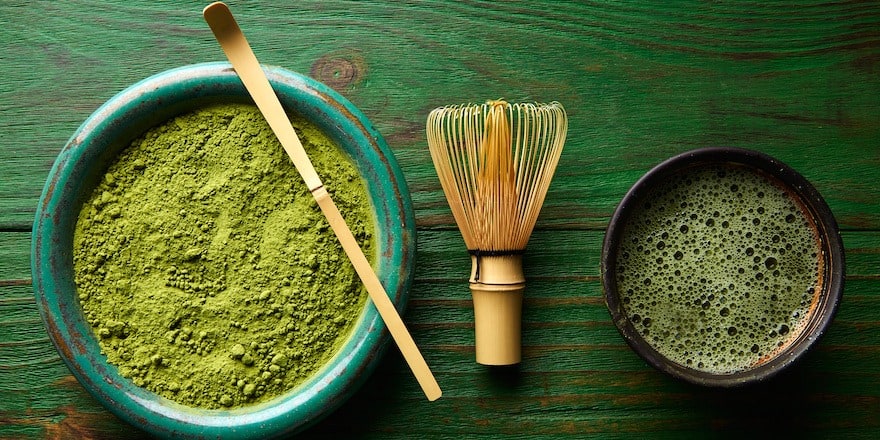BENEFITS OF MATCHA
✓ Stimulates brain functions
✓ A powerful antioxidant
✓ Detoxifies and good for the liver
✓ Protects the heart and helps burn fat
✓ May prevent cancer onset
What is matcha?
Matcha is the name given to a fine green powder originating from Japan, obtained by grinding dried green tea (Camellia sinensis) leaves. Besides its form, what distinguishes it from “ordinary” green tea is its cultivation method: the tea bushes are covered around twenty days before harvest.
This technique, blocking direct sunlight, slows down leaf growth and allows to boost the production of chlorophyll and amino acids. It becomes a sort of ultra-concentrated green tea, which gives matcha its exceptional properties.
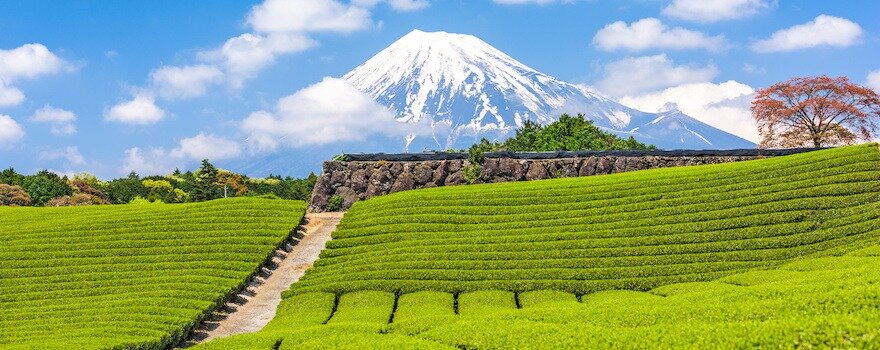
The leaves obtained are called tencha, darker than normal, unfolded and dried in their entirety. Then traditionally, they are stone-ground. It is said that the best matcha comes from Nishio, south of Nagoya.
Matcha was born in the late 12th century, when monk Eisai made a trip to China and brought back to Japan both the philosophy of Zen Buddhism and the powdered tea technique. It was quickly integrated into the rituals of Buddhist monasteries, notably into that of meditation, as it would help keep monks awake.
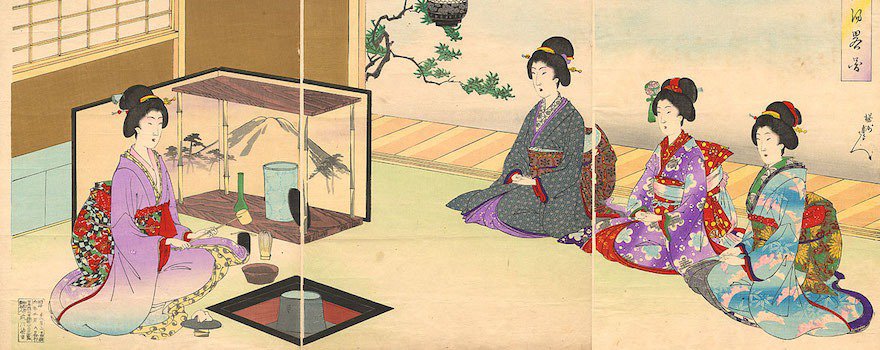
From the 13th century, matcha was also consumed by samurais, the famous Japanese warriors, to increase their physical strength and concentration. It is also central to the tea ceremony, a highly codified traditional art where a master prepares and serves it to a small group of people in a zen and silent atmosphere.
Its production method allows it to have a very high concentration of antioxidants, polyphenols, flavonoids, catechins, chlorophyll, amino acids…
Today, matcha is present everywhere in Japan, available as self-serve tea in restaurants, in desserts and treats… It’s even found in Kit-Kats and Oreos – not very superfood! It has an umami flavor. Also known as the 5th basic flavor, alongside sweet, salty, bitter, and sour.
Matcha is said to be good for the mind and mood. It is recommended for both students and the elderly, for its stimulating and calming qualities. It is also recommended for people looking to lose weight or maintain a healthy weight. It is increasingly popular with us, as studies continue to confirm its benefits for our body.
Nutritional Composition
- Amino acids: theanine…
- Caffeine
- Antioxidants: chlorophyll, polyphenols (flavonoids), catechins…
Benefits of Matcha
★ Stimulates Brain Functions
Matcha improves certain brain functions, notably thanks to the caffeine and theanine it contains.
It is more concentrated in caffeine than green tea: it contains about 35 mg / 1g, which is approximately half a teaspoon. This helps to improve our reaction time, attention, and memory.
It is also very rich in theanine (L-theanine, not to be confused with theine), an amino acid that contributes to relaxation and stress reduction. It is particularly compatible with caffeine as it helps reduce its side effects.
It awakens us while calming us: this is why matcha has long been considered an ally for meditation.
This study from Wageningen University in the Netherlands, conducted with 23 people, showed that those who consumed matcha had better attention, reaction time, and memory. This one, conducted by the Unilever Food and Health Research Institute in the Netherlands, demonstrated that theanine acts directly on the brain, calming our mind without causing drowsiness.
★ A Powerful Antioxidant
Matcha is a remarkable source of antioxidants! It is especially rich in catechins, a flavonoid that gives it its umami taste, as well as chlorophyll, the natural pigment that gives it its green color and also contains antioxidants such as carotenoids.
Antioxidants help to fight against free radicals and protect our cells from aging and chronic diseases.
Once again, matcha is more concentrated in antioxidants than green tea, which is already rich in them!
This study by the Zhejiang Tea Science Society in China, conducted on mice, showed that consuming matcha reduces damage caused by free radicals and enhances the body’s metabolism and antioxidant activity.
★ Detox and good for the liver
Matcha boosts the proper functioning of the liver, protects it, and helps to eliminate toxins. It helps to rebalance and purify the body.
It is an excellent detox food. It is recommended for detoxifying the body after excess or continuously. Its detox properties are attributed particularly to catechins. A matcha cure also helps to improve skin appearance.
This study by the University of Toyama in Japan conducted on rats showed that consuming matcha helps to protect the liver and kidneys. This one, conducted by various Chinese universities, showed that green tea decreases the risk of liver diseases.
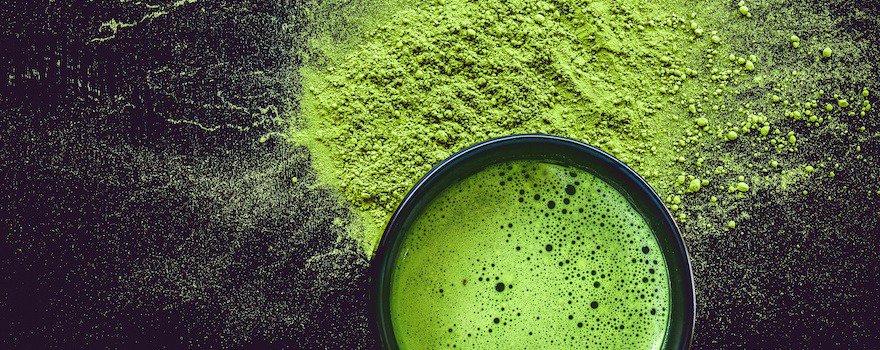
★ Protects the heart and helps burn fat
Consuming matcha helps to reduce the risk of heart diseases and protect the heart. These properties are attributed to the many antioxidants it contains.
Green tea powder also helps to burn fat more rapidly; it speeds up the metabolism and boosts our energy. Thus, matcha is recommended for people who want to lose weight. Here again, catechins play a role.
This meta-analysis by Maastricht University showed that regular consumption of green tea helps one lose weight and maintain a healthy weight.
★ May prevent the onset of cancers
Green tea, and particularly matcha, are natural ways to prevent the onset of cancers and limit the spread of cancerous cells.
Their anti-cancer properties are under study and have been demonstrated in in-vitro and animal trials. These are promising leads in cancer research.
These virtues are again attributed to catechins, of which matcha is abundant – also found in cocoa and guarana.
This in-vitro study by the University of Wisconsin demonstrated that the catechin present in matcha helps eliminate cancerous cells.
How to consume it?
Favor organic matcha
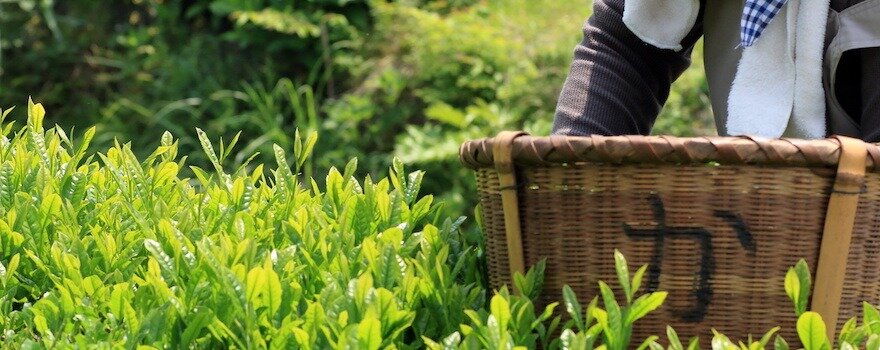
As with all our food, it is preferable to favor products from organic farming that are free from pesticide residues and respect the environment. In this case, drinking organic matcha is particularly recommended since tea leaves are highly absorbent. Thus, they may contain pesticide or lead residues depending on the soil in which they grow.
Also read From a Japanese farm to Nature & Découvertes, the lovely story of Camille’s organic matcha
The boom of matcha on the market favors the emergence of industrial crops that produce products en masse without regard for nutritional, health, and environmental qualities. It is therefore recommended to rely on labels that certify a product as 100% organic.
Young Japanese farmers have created a cooperative society, Matcha Organic Japan, which ensures organic and fair trade cultivation of matcha. Some French brands are also vigilant and committed to this issue.
Preparation of matcha
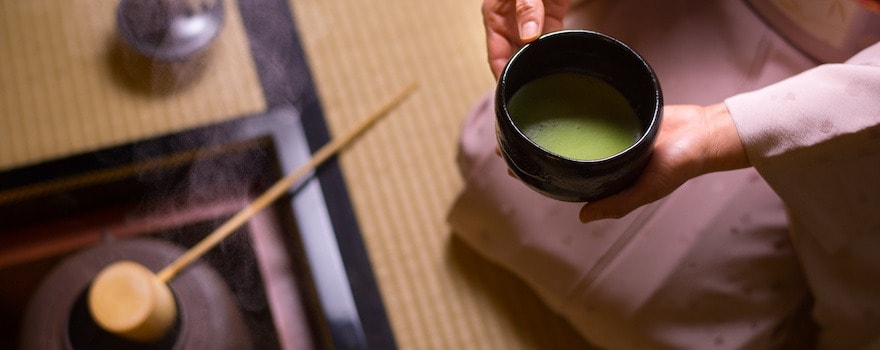
Unless you are a purist and mimic the tea ceremony, it couldn’t be simpler! Heat water to 80°C – almost simmering, pour it into a bowl, then mix in a teaspoon of matcha. Whisk the matcha vigorously to make it frothy, and it’s ready.
The process is more sophisticated during the tea ceremony. In broad strokes: matcha is stored in a box, it is sifted through a steel sieve into the bowl, a bit of hot water is poured in, and the mixture is emulsified with a bamboo whisk until the matcha is lump-free and the bowl’s edges are clean.
It can also be easily mixed into yogurt or a smoothie, which it will color beautifully!
Desserts, pastries, and Matcha Latte
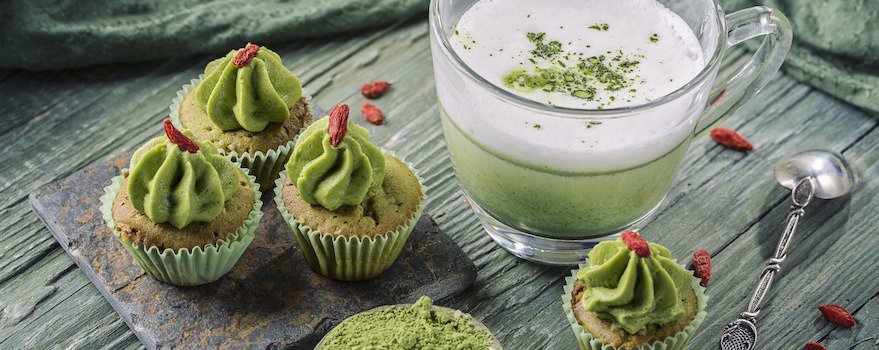
Surprisingly, it is rather desserts and pastries that have popularized matcha here. Eclairs, cookies, cakes, financiers, ice creams, cupcakes… Generally, you just need to incorporate matcha powder into the flour or milk when preparing your dessert.
As for the Matcha Latte, it is becoming increasingly popular in cafes and tea rooms. You can make it yourself by mixing matcha powder, hot milk, and coconut sugar!
Dosage
As it is a concentrated food, it is recommended to drink up to 2 or 3 cups a day at most.
Contraindications and Side Effects
At recommended doses, there are no notable contraindications and side effects. Its high caffeine content can, however, cause diarrhea. And in case of pregnancy or breastfeeding, a doctor’s advice is sought.


